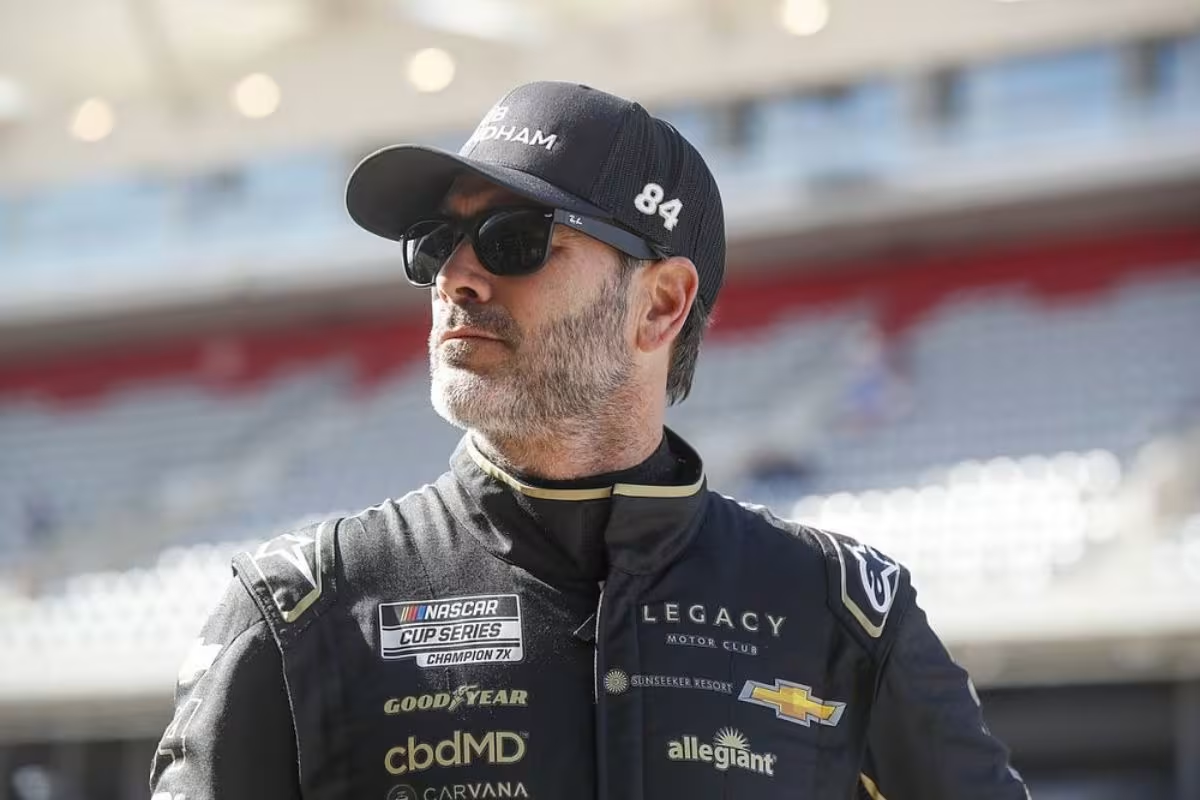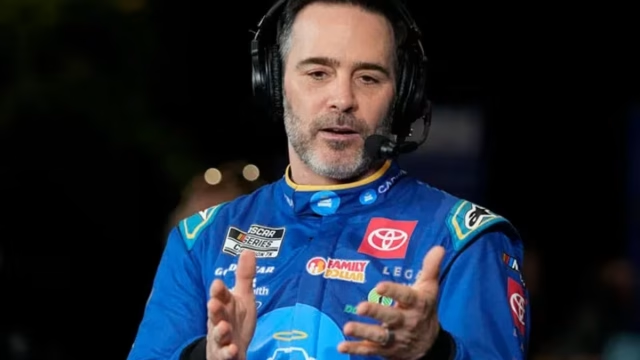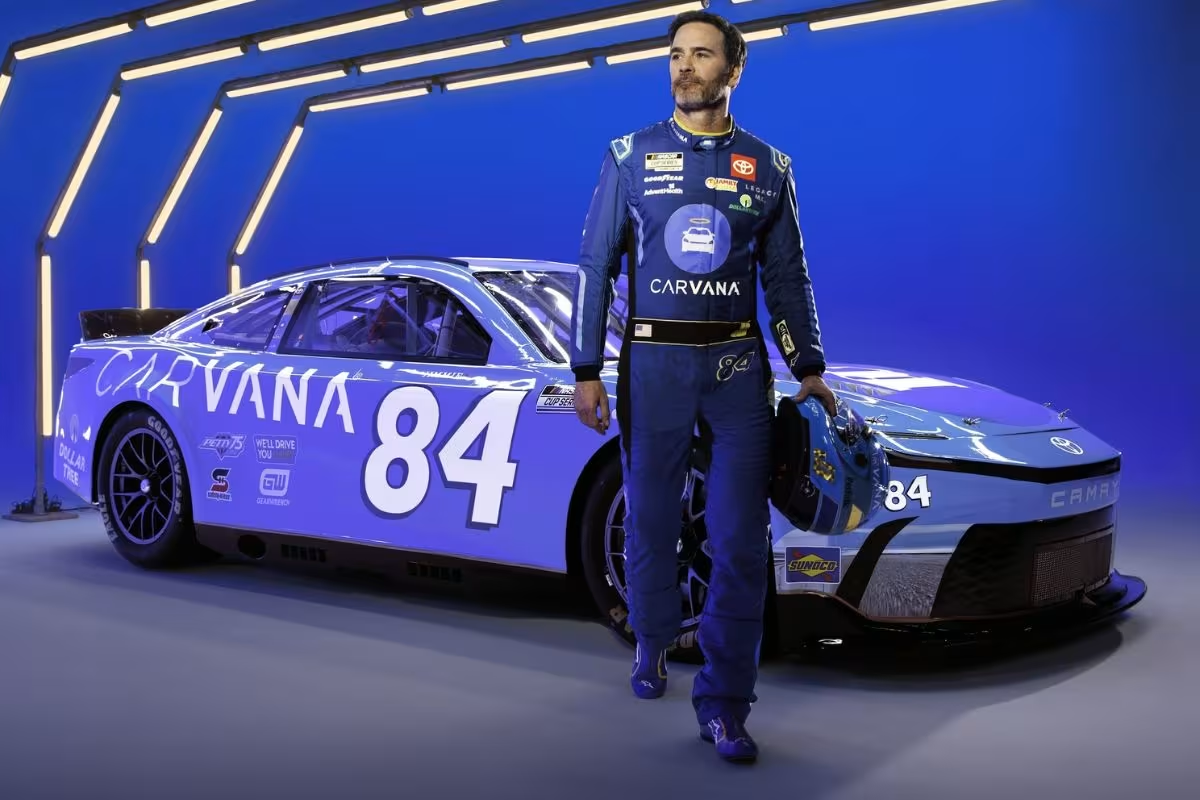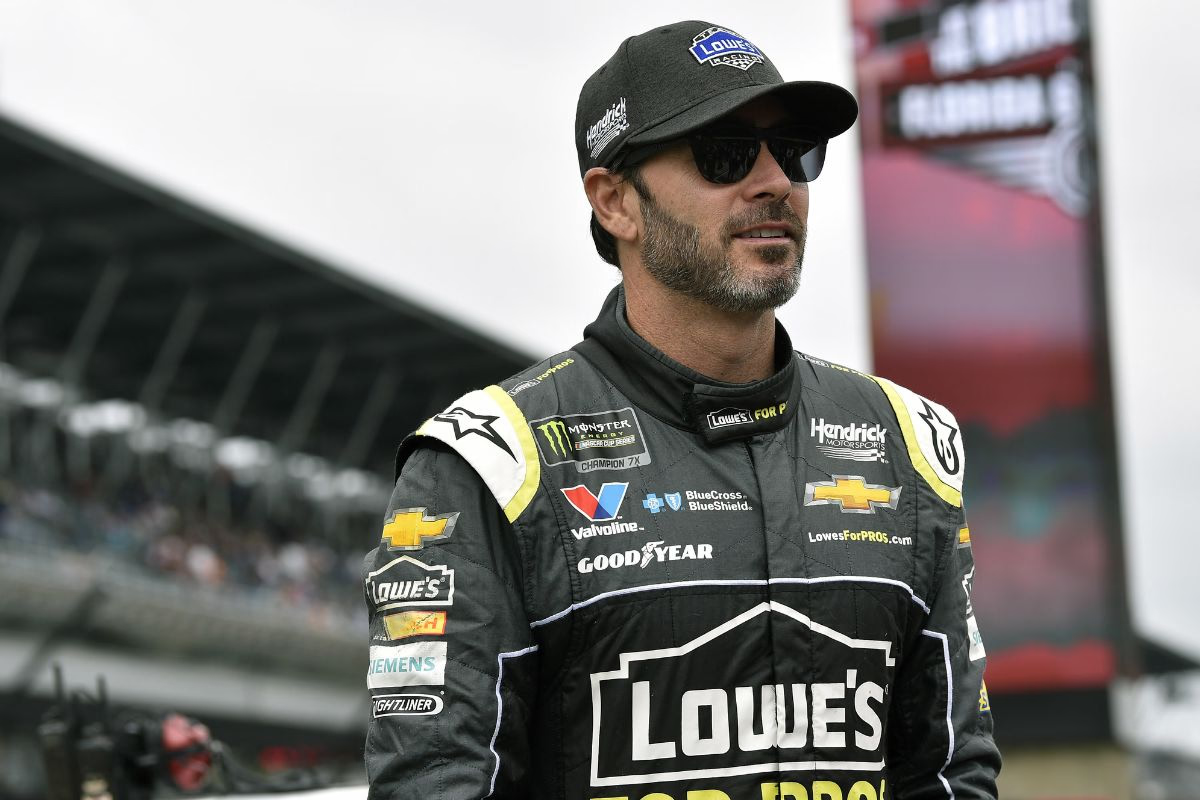Jimmie Johnson‘s classic racing style is starting to hold him back in NASCAR, especially with the new Next-Gen car. It’s clear he’s having a hard time adapting, as he often finishes around 28th place. The changes in how the cars work require drivers to use newer techniques, like better throttle control and smarter cornering strategies.
Key Highlights
- Jimmie Johnson’s reliance on outdated racing techniques hampers his adaptability to the Next-Gen car’s demands, impacting his performance.
- Consistent finishes in 28th or 29th positions reflect a struggle to connect with the current NASCAR competitive landscape.
- The Next-Gen car’s aerodynamic limitations and reduced horsepower have challenged seasoned drivers, including Jimmie Johnson.
- Jimmie Johnson’s past success at Las Vegas highlights the need for adaptability, which he currently lacks in the evolving racing environment.
- Despite challenges, Jimmie Johnson’s optimistic mindset and commitment to growth indicate potential for future relevance in NASCAR.
Jimmie Johnson’s Struggles with the Next-Gen Car
Jimmie Johnson’s recent experiences with NASCAR’s Next-Gen car serve as a poignant reminder of the challenges faced by even the most accomplished drivers in the sport. Having been a dominant force in NASCAR, with four victories at Las Vegas Motor Speedway between 2005 and 2010, Jimmie Johnson’s current struggles highlight the notable shift in vehicle dynamics and performance metrics that the Next-Gen car embodies.
The backlash surrounding this new iteration revolves largely around its aerodynamic limitations and reduced horsepower, which sharply contrast with the capabilities of older models. Jimmie Johnson’s 28th-place finish in a modern-day Cup Series race emphasizes this disconnect, as he reflects on a racing era where skill and planning yielded more immediate results. The nostalgia for those days is palpable; it speaks to a driver who thrived on the ability to execute tactical overtakes and maintain competitive edge through superior handling.
Moreover, Jimmie Johnson’s analysis reveals a broader inquiry into how the Next-Gen car has altered the racing landscape. The diminished capacity for passing lessens not only the spectacle of the sport but also the strategic insight required from drivers.
As he seeks to understand these changes, Jimmie Johnson’s perspective serves as a critical lens through which the implications of technological evolution in NASCAR can be examined.

Jimmie Johnson’s ‘Backdated’ Mentality Affects Performance
The challenges presented by the Next-Gen car have not only tested the specialized adaptability of seasoned drivers but have also exposed the mental hurdles they face in reconfiguring their racing strategies. Jimmie Johnson’s return to NASCAR, after a four-year hiatus, has highlighted the limitations of his “old-school” mentality in a rapidly evolving environment. His struggles to adapt have been glaringly evident, as evidenced by his performance, consistently finishing in the 28th or 29th positions in multiple races.
Jimmie Johnson’s reliance on past techniques—particularly the approach of “easy in, primary one back to the gas”—has proven detrimental in the context of the Next-Gen car’s demands. This car is not merely an update; it represents a paradigm shift in racing dynamics, requiring drivers to engage in more intricate throttle control and corner entry strategies. Jimmie Johnson’s admission of slowly learning the new mechanics emphasizes the considerable gap between the old and new methodologies.
“We already make speed in this car for a long long time. Easy in, first one back to the gas – that mentality worked with the old-generation car. It’s not the case with this car. It’s a much different approach with corner entry, with a whole lot of throttle controlling the car in. Slowly getting the hang of that. It’s pretty amazing how sensitive your right foot is to control that.” – Jimmie Johnson
“We’re learning a lot. Getting our car put together, getting our program together” @JimmieJohnson finished in 28th after an incident free day.
Johnson also says he will be in the car some in 2025, but is not yet sure of his schedule.
📹 @PitLaneCPT #NASCARPlayoffs pic.twitter.com/bjYGVCKZZb
— Frontstretch (@Frontstretch) October 20, 2024
Moreover, the broader landscape of NASCAR has changed, with drivers advocating for improved horsepower that Jimmie Johnson must navigate without the benefit of a robust adaptation strategy. The result is a performance that lags behind his contemporaries who have accepted the evolving demands of the sport.
As Jimmie Johnson struggles to recalibrate his racing mindset, doubts about his relevance in the current NASCAR landscape loom large. His legacy as a seven-time NASCAR champion is undeniable, yet the question remains: can he successfully bridge the gap between past glories and present realities?
Looking for Positives Amidst Challenges
Amidst the challenges faced during his return to NASCAR, a glimmer of optimism persists for Jimmie Johnson and his Legacy Motor Club team. Despite a rocky start to the 2024 season, Jimmie Johnson’s perspective remains resolutely positive. He emphasized the learning opportunities inherent in their struggles, stating, “We’re learning a lot, getting our car put together, getting our program together.” This mindset reflects a fundamental aspect of competitive sports: the ability to extract valuable insights from adversity.
While Jimmie Johnson’s own performance has been disappointing, with a 25th-place finish representative of the team’s growing pains, his optimism is strengthened by the progress shown by his teammate, John Hunter Nemechek. John Hunter Nemechek’s ascension from 26th to a top-ten finish serves as a guiding light of potential, showing that the team can indeed cultivate speed and competitiveness. Jimmie Johnson’s acknowledgment of this achievement reinforces a culture of collective improvement within the Legacy Motor Club.
Furthermore, Jimmie Johnson’s ability to remain upbeat even when faced with setbacks—such as missing the ‘lucky dog’ opportunity—demonstrates resilience. His belief that they were not “doing too bad” and his anticipation for upcoming races, such as the event in Phoenix, signals a steadfast commitment to growth.
“Made a great run with the 42 car. The 43 car had some speed. And we weren’t doing too bad – just sadly missed a lucky dog scenario and got trapped out of a lap and could really never get it back. All in all, a decent run – excited to run in Phoenix in a couple of more weeks.” – Jimmie Johnson
This focus on the positives amidst challenges not only strengthens Jimmie Johnson’s legacy but also serves as a vital element for the entire team as they navigate the complexities of modern NASCAR racing.
Memories of Jimmie Johnson’s Previous Las Vegas Successes
Throughout his career, few venues have been as kind to Jimmie Johnson as Las Vegas Motor Speedway. The track has served as a backdrop for some of his most memorable victories, showcasing his ability to strategize and execute under strain. One standout moment occurred in 2010 during the Kobalt Tools 400, where Jimmie Johnson’s tactical pit stop decisions solidified his dominance in NASCAR history.
In that race, Jimmie Johnson opted for a four-tire pit stop late in the race, a move that ultimately paid dividends. While Jeff Gordon led a staggering 219 laps, Jimmie Johnson’s decision to take four tires allowed him to restart in a position that would lead to an exhilarating overtake, marking a critical moment in his campaign for a fifth consecutive championship. This race not only exemplified Johnson’s skill but also set a precedent for tactical pit strategies that other drivers, like Joey Logano, would later emulate.
Jimmie Johnson’s Las Vegas successes not only highlight his racing expertise but also emphasize the importance of adaptability—qualities that will be crucial for him as he navigates the evolving landscape of NASCAR’s Next-Gen car.
News in Brief: Jimmie Johnson’s Classic Racing Style
In view of recent challenges, Jimmie Johnson’s traditional approach to racing raises questions regarding its applicability in the evolving landscape of NASCAR. The struggles experienced with the Next-Gen car highlight a potential disconnect between past successes and current demands.
While nostalgia for previous victories persists, the need for adaptation becomes increasingly evident. Ultimately, Jimmie Johnson’s quest serves as a case study on the importance of innovation in a sport that continues to transform rapidly.
ALSO READ: Jimmie Johnson Discloses His Childhood Life and How He Stayed True to His Roots


